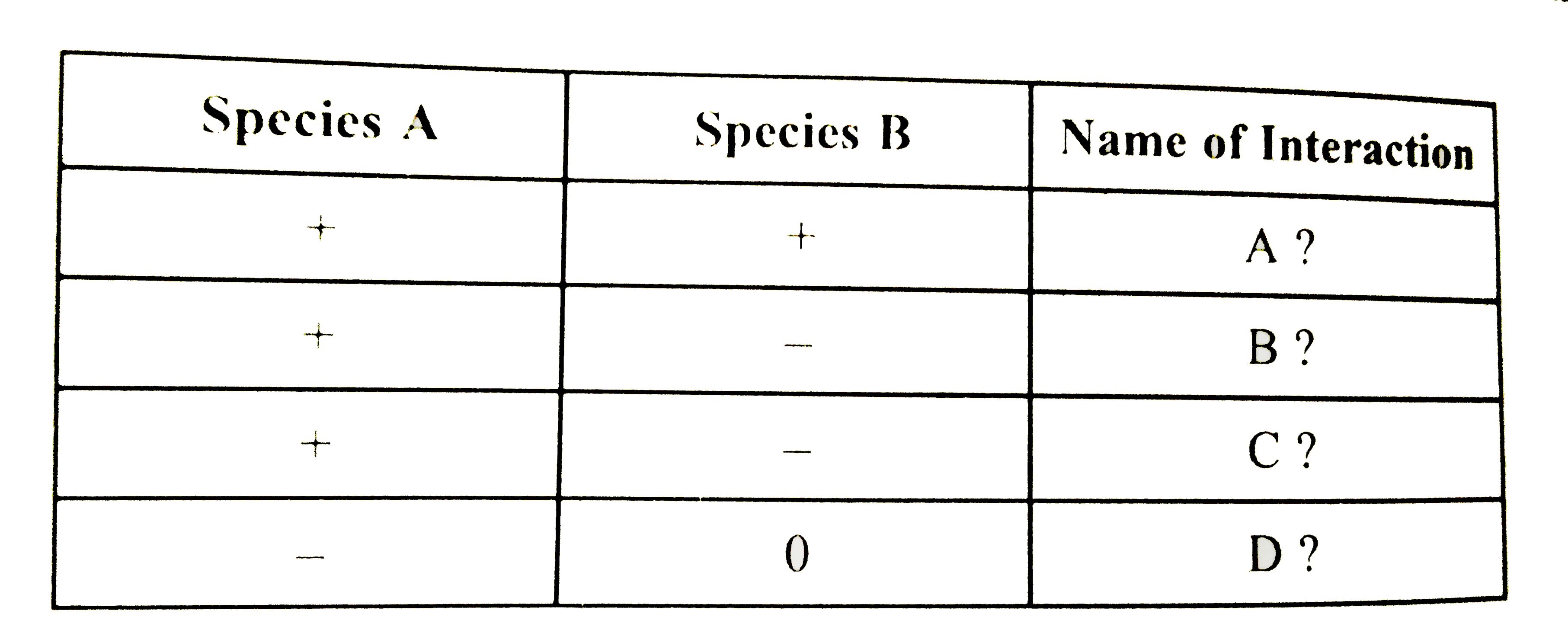Given below is a table depicting population interactions between Species A and Species B.
Type of interactionSpecies ASpecies B(a)(−)(+)(b)(+)(−)
Name the type of interactions (a) and (b) in the above table.
Justify giving three reason, how the type of interaction (b) is important in an ecological context
Step-by-Step Solution:
1. Identify the Interactions:
- In the table provided, we have two interactions involving Species A and Species B.
- For interaction (a), Species A has a negative effect on Species B (+) indicates that Species B benefits from the interaction.
- For interaction (b), Species A has a positive effect on Species B (-) indicates that Species A is harmed by the interaction.
2. Name the Interactions:
- Interaction (a): This interaction is known as Parasitism. In parasitism, one organism (the parasite) benefits at the expense of the other (the host), which is harmed.
- Interaction (b): This interaction is known as Predation. In predation, one organism (the predator) benefits by consuming another organism (the prey), which is harmed.
3. Justify the Importance of Predation in an Ecological Context:
- Population Control: Predation helps regulate the population sizes of prey species. Without predators, prey populations can grow unchecked, leading to overpopulation and depletion of resources.
- Species Diversity Maintenance: Predation contributes to maintaining species diversity within ecosystems. By controlling the populations of certain species, predators allow for a greater variety of species to coexist.
- Energy Transfer: Predation is a natural mechanism for energy transfer within ecosystems. It allows energy to flow from lower to higher trophic levels, supporting the overall energy dynamics of the ecosystem.
- In the table provided, we have two interactions involving Species A and Species B.
- For interaction (a), Species A has a negative effect on Species B (+) indicates that Species B benefits from the interaction.
- For interaction (b), Species A has a positive effect on Species B (-) indicates that Species A is harmed by the interaction.
- Interaction (a): This interaction is known as Parasitism. In parasitism, one organism (the parasite) benefits at the expense of the other (the host), which is harmed.
- Interaction (b): This interaction is known as Predation. In predation, one organism (the predator) benefits by consuming another organism (the prey), which is harmed.
- Population Control: Predation helps regulate the population sizes of prey species. Without predators, prey populations can grow unchecked, leading to overpopulation and depletion of resources.
- Species Diversity Maintenance: Predation contributes to maintaining species diversity within ecosystems. By controlling the populations of certain species, predators allow for a greater variety of species to coexist.
- Energy Transfer: Predation is a natural mechanism for energy transfer within ecosystems. It allows energy to flow from lower to higher trophic levels, supporting the overall energy dynamics of the ecosystem.
Topper's Solved these Questions
- SAMPLE PAPER 2019BOOK - XII BOARD PREVIOUS YEAR PAPER ENGLISHCHAPTER - SAMPLE PAPER 2019EXERCISE - Section E Part A
3 Videos
- EXAM REVISION SERIESBOOK - XII BOARD PREVIOUS YEAR PAPER ENGLISHCHAPTER - EXAM REVISION SERIESEXERCISE - All Questions
10 Videos
- XII BOARDSBOOK - XII BOARD PREVIOUS YEAR PAPER ENGLISHCHAPTER - XII BOARDSEXERCISE - Set-I
143 Videos
Similar Questions
Knowledge Check
Type of interaction where an individual sacrifices its own welfare (life) for the benefit of another animal of its own species is
AAltruismBScavengingCProtocooperationDCommensalism
Discuss the various types of positive interactions between species.
View SolutionSpecies A(-) & species B(o) shows the following interaction:-
View SolutionWhich type of population interaction is found between clown fish and sea anemone?
View SolutionWhat type of population interaction in A,B,C,D between the species A and B as per the tabular column given below .

View SolutionName the blank spaces a, b, c and d in the table given below

View SolutionStudy the figures below and identify the type of interaction between XY-XY molecules.

View SolutionName the types of synthesis ‘a’ and ‘b’ occurring in the replication fork of DNA as shown below:

View Solution
